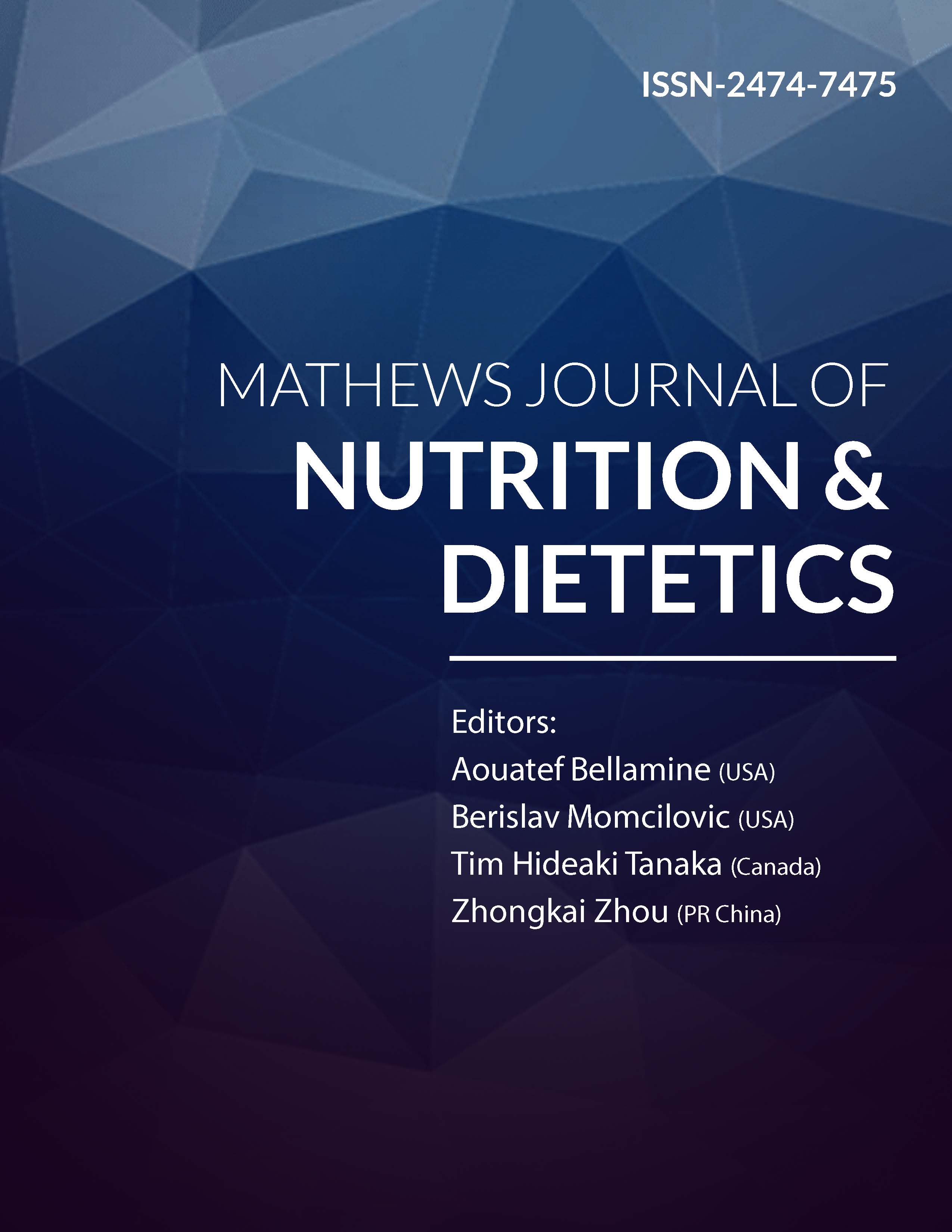
Information Links
Previous Issues Volume 2, Issue 1 - 2017
Correlation Between Body Weight and Total Body Fat Composition in Adults in A Community in Ghana
Frederick Vuvor1, Obed Harrison
1Department of Nutrition and Food Science, School of Biological Sciences, College of Basic and Applied Sciences University of Ghana
Corresponding Author:Frederick Vuvor, Department of Nutrition and Food Science, School of Biological Sciences, College of Basic and Applied Sciences University of Ghana, Tel: +233244608344; E-Mail: [email protected]
Received Date: 05 Aug 2017
Accepted Date: 14 Sep 2017
Published Date: 19 Sep 2017
Copyright © 2017 Vuvor F
Citation: Vuvor F and Harrison O. (2017). Correlation Between Body Weight and Total Body Fat Composition in Adults in A Community in Ghana. Mathews J Nutr Diet. 2(1): 015.
ABSTRACT
Background and objectives:
Body weight can be defined as the sum of bone, muscle, organs, body fluids and adipose tissue. Some or all of these components are subject to normal change as a reflection of growth, reproductive status, variation in exercise levels and effects of aging. The study sought to assess the strength of correlation between body weight and body fat composition in adults from the ages 30 to 60 years.
Methods:
It is cross-sectional study of adults between 30 to 60 years. The study was conducted in a densely populated suburb of Accra the capital city of Ghana. WHO Step-wise questionnaires were used to gather all data. Weight was determined using standard weighing scale ensuring that subjects were in minimal clothing. Height measurement was taken using microtoise. The skinfold thickness were measured using skinfold caliper. The statistical package SPSS “11” and Microsoft Excel software were used for the analyses. Frequencies and percentages was computed for categorical variables whilst means and standard deviation for continuous variables. Pearson Correlational analysis was used to assess the relationship between body weight and total body fat.
Results:
Females recorded the highest percentage body fat of 28.35% as compared to 17.81% in males. The driving occupation had the highest % bod fat of 36.30% as compared to policemen who had the least % body fat of 11.5%. Percentage body fatwas seen to increase with increasing age (thus 28.19% at 30-34 years versus 37.94% at = 60 years) just as suggested by literature. Both body weight and % body fat decreased with increasing energy expenditure however BMI fluctuated by increasing age but peaked between the ages of 40-44 years. More females (14.3%) than males (6.48%) turned out to be morbidly obese while about 60% of males as compared to 50% females were within the ideal weight range. Body weight and % body fat was positively correlated (r = 0.217, P = 0.002) with gender showing a stringer correlation with body fat (r = 0.671, P < 0.001).
Conclusion:
It could be concluded from our findings that body weight is positively correlated with percentage body fat. Physical activity and conscious effort to maintain an ideal body weight through dietary approaches is therefore encouraged to reduce the high onset of non-communicable diseases that plagues the vulnerable population.
Body Composition; Body Weight; Skinfold Thickness.